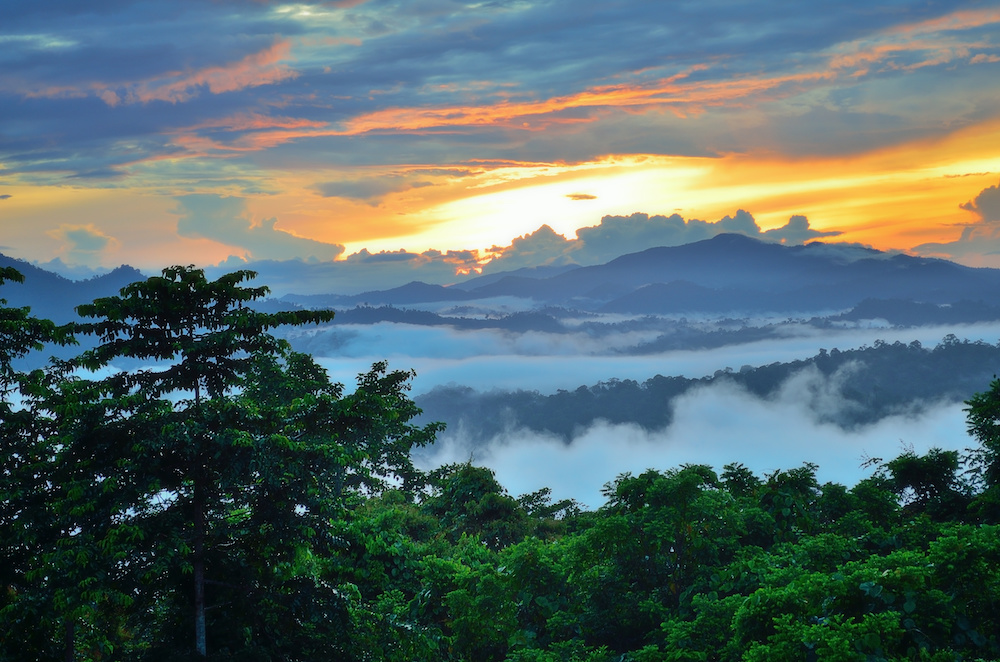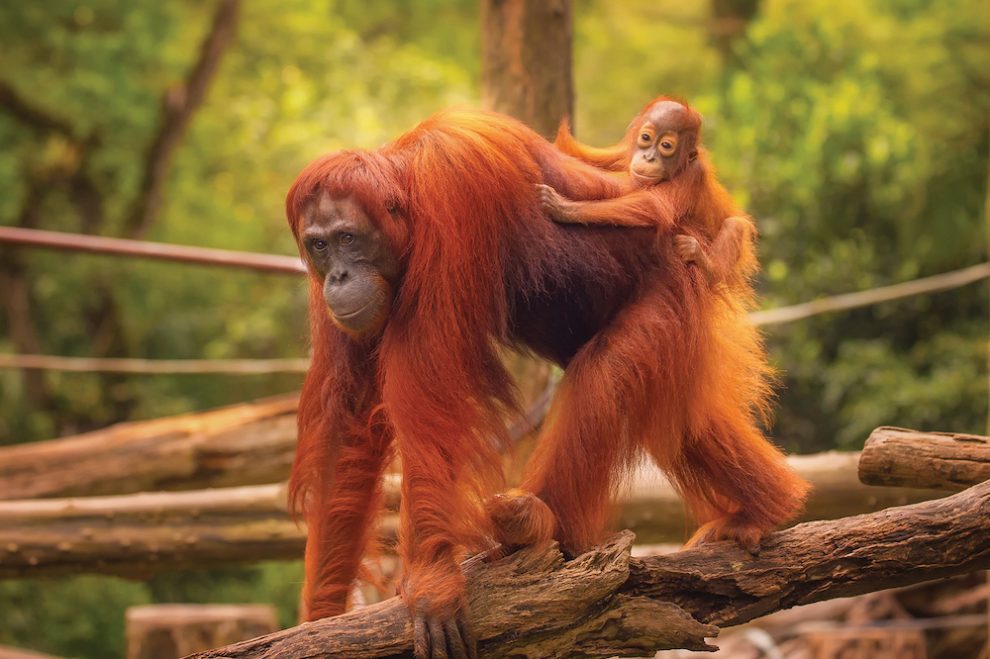Borneo attracts visitors for its biodiversity, ancient rainforests, tropical islands and its rich indigenous culture. Steve Kimpton took a travel journey through Borneo’s incredible landscapes and discovered just why we need to fight hard to preserve and protect this beautiful island.
Borneo is the third-largest Island in the world, with the first being Greenland and the second New Guinea. (Australia is known as a continent otherwise it would be the largest). It’s divided by three countries. Sabah and Sarawak are states of Malaysia. The Sultanate of Brunei is the smallest country on the Island. The rest of Borneo is owned by Indonesia and makes up more than 73%. In fact at the end of August, The President of Indonesia announced plans to move the Indonesian Capital from Jakarta to an unnamed city in Borneo.

In 1970 more than 75% of Borneo was covered in Rainforest, however more than 30% has disappeared in the last 40 years. The Borneo rainforest is estimated to be around 140 million years old, making it one of the oldest rainforests in the world. It’s the centre of the evolution and distribution of many species of plants and animals, including the Bornean orangutan. The rainforest is an important refuge for many other forest species such as the Borneo elephant, the eastern Sumatran rhinoceros, the Bornean clouded leopard, the hose’s palm civet and the Dayak fruit bat.
READ MORE TRAVEL ARTICLES: Top 10 Greatest Summer Experiences in Perth
Peat swamp forests occupy the entire coastline of Borneo. The soil of the peat swamps are comparatively infertile, while they are known to be the home of various bird species such as the hook billed bulbul, helmeted hornbill and rhinoceros hornbill. There are about 15,000 species of flowering plants with 3,000 species of trees, 221 species of mammals and 420 species of resident birds in Borneo. There are about 440 freshwater fish species in Borneo, about the same as Sumatra and Java combined. The Kinabatangan River is home to the Borneo river shark.
In 2010, the World Wide Fund for Nature (WWF) stated that 123 species have been discovered in Borneo since 2007.
Being so close to Australia, Borneo gives Australians a chance to have experiences that many would have to travel to the Amazon for. It’s home for many unique flora and fauna. The most famous of course, is the orangutan. There are only three types of Orangutan and they can only be found in the rainforests of Sumatra or Borneo. The word Orang-utan actually translates to person of the forest.
Due to mainly habitat destruction, Orangutans are now listed as critically endangered and their population has declined by 60% since 1950. With palm oil being so important to the economy of Borneo the habitats will continue to decrease and if we are not careful, orangutans will become extinct.
I recently went on a holiday through Brunei and Sabah, both in the North West of Borneo. Royal Brunei Airlines fly out of Brisbane as well as Melbourne and they fly direct to Brunei. They have also partnered with Malindo Air and they have introduced R.B. Link which flies all over Borneo. The flight from Brisbane to Brunei takes about six hours and the service is great. The only difference is that they do not serve alcohol on the flights but that is not a problem to the majority of passengers. They make up for this by making sure you have everything you need from a filling meal to snacks and drinks all through the flight.
Borneo itself caters for not only the adventurous but for those who just want to relax and unwind. There are hotels and resorts in all of the cities throughout Borneo and as with any country they range from budget, backpackers to 5-star. When choosing somewhere to stay make sure you do your homework and pick a place that caters for what you want. Even the cheaper hotels offer great packages and can help you with any tours, the same as the five-star resorts.
“Travel in Borneo caters for not only the adventurous but for those who just want to relax and unwind”
Steve Kimpton
As with many of the countries in South East Asia, Borneo has had many different populations over the years. If you have a look at the history of Borneo you will notice the Dutch had a large influence originally. Then, of course, the Chinese, British and even the Americans all had parts of Borneo that they called home. Being such a large island, many countries have viewed it as the gateway to South-East Asia.
During World War 2, Japanese forces gained control and occupied most areas of Borneo from 1941 -1945. After the fall of Singapore, the Japanese sent several thousand British and Australian prisoners of war to camps in Borneo. From the Sandakan Camp only six of 2500 prisoners survived after they were forced to march in what is now known as the Sandakan Death March. In addition, the total of 17,488 Javanese labourers brought in by the Japanese during the occupation only 1500 survived. Guerilla warfare was continuously carried out by the locals with the support of the Allied force. In fact, Australia contributed significantly to the liberation of Borneo and the Australian Imperial Force was sent to fight off the Japanese until the island was completely liberated in 1945.
Travel in Borneo is a highly unique experience and the country offers a range of travel options from budget to 5 star.





















Add Comment